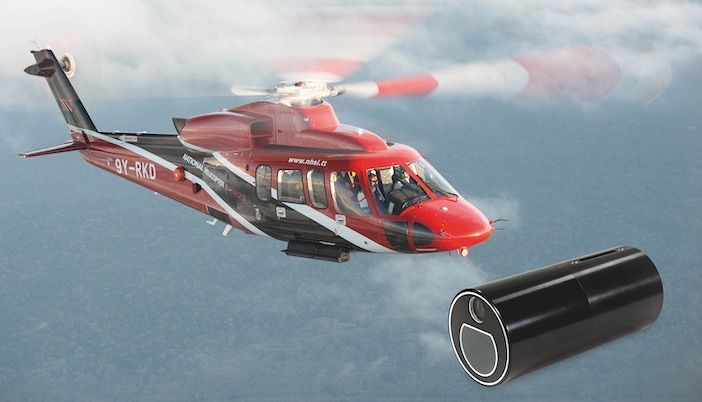Words by Paul Willis
At the Federal Aviation Authority’s (FAA) flight test center at Atlantic City airport, New Jersey, a major study is underway. FAA researchers are in the midst of an exhaustive long-term testing regime of the use of Enhanced Flight Vision Systems (EFVS) in helicopters.
The study will eventually contribute to the development of FAA operational rules and criteria for the use of EFVS in helicopters. Similar regulations already exist for fixed-wing aircraft.
The main impetus for the study has been to improve flight safety, says research program manager Cliff Johnson. He says, “From the work we’ve been doing with the US Helicopter Safety Team – an offshoot of the International Helicopter Safety Foundation – we’ve adopted a target of a 20% reduction in the helicopter fatal accident rate by 2020, with the aim of zero accidents in the future.”
With these ambitious goals in mind the Helicopter Safety Team (HST) worked with safety experts in the industry to carry out a review of fatal accidents over a five-year period from 2009 to 2014. The accident analysis revealed the three most common causes of fatal accidents: loss of control, flying into bad weather and low altitude operations.
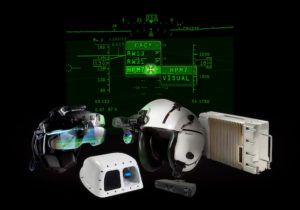 As the HST looked around for safety enhancements to mitigate against these dangers, interest grew in “bringing over technology from fixed-wing to helicopters to improve visibility in low visibility environments as well as normal operations,” says Johnson. “We identified several accidents where had the pilot had some of these systems on-board there may have been a better outcome.”
As the HST looked around for safety enhancements to mitigate against these dangers, interest grew in “bringing over technology from fixed-wing to helicopters to improve visibility in low visibility environments as well as normal operations,” says Johnson. “We identified several accidents where had the pilot had some of these systems on-board there may have been a better outcome.”
IMPROVING PILOT VISION
EFVS are a suite of technologies that provide visual data to the pilot to help them see and understand their surrounding terrain. The technologies deployed in EFVS include enhanced vision systems (EVS), synthetic vision systems (SVS) or a combination of the two, known as combined vision systems (CVS).
EVS use an infrared camera, sometimes with a visible light camera, to improve situational awareness. For fixed-wing aircraft the infrared sensors are often cryogenically cooled, which helps to exaggerate the difference between the thermal return of the cameras and enables the pilot to see with increased clarity. Meanwhile SVS uses databases run by the FAA and other aviation agencies to provide visual maps of obstacles in the environment.
In its current iteration in fixed-wing aircraft EFVS is typically presented to the pilot in the form of a heads-up display (HUD) that appears in the pilot’s viewpoint. However, a HUD is unlikely to function well in the confined space of a helicopter cockpit, says Johnson.
“With helicopters you don’t have room for a HUD and you might not have the room for cryogenically-cooled sensors. So we’re investigating if we can use a more compact sensor and use a head-worn display that moves with your head.”
LANDING CHALLENGES
The reduced cockpit size is not the only the difference between helicopters and fixed-wing aircraft that Johnson and his team are having to deal with. Another major difference is in how they takeoff and land.
“The EFVS rules that exist today apply to using the technology on an instrument approach to a runway,” says Johnson. “The rules help you use the vision systems to acquire the visual references that you need to land – runway lights and markings, the runway environment and the wind sock.
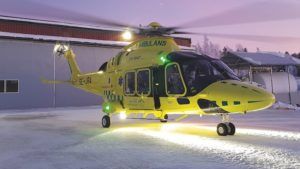 “Landing of helicopters is a different problem and it’s harder. With fixed-wing you land and stop, whereas with helicopters you almost have to stop and then land.”
“Landing of helicopters is a different problem and it’s harder. With fixed-wing you land and stop, whereas with helicopters you almost have to stop and then land.”
Consequently, many of the current EVS sensors, being designed for the much lower angle of approach necessary for landing fixed-wing aircraft, are less effective for the steep landing approaches helicopters make, he says.
There is also the extra challenge of trying to locate obstacles on the approach path, such as the fence around the helipad or other buildings, trees and wires. “These are things that you don’t have to worry about with fixed-wing because the airspace is protected,” he says.
LIGHTING THE WAY AHEAD
For its study the FAA has been working closely with several manufacturers of EFVS equipment, including Universal Avionics, recently acquired by the Israel-based defense firm Elbit Systems, Astronics, which makes the Max-Viz EVS systems, Esterline CMC Electronics and Hensoldt, which was formerly part of the defense division of Airbus Group.
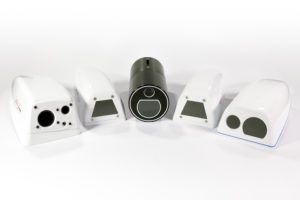 The suppliers have provided hardware for Johnson and his team to fit to their test helicopter. Astronics provided two of its Max-Viz dual-sensor EVS systems. The systems use both a long-wave infrared (LWIR) sensor and a visible light camera, which blends with the LWIR camera to give a clearer picture of the terrain. “With airports moving to LED lighting on runways and taxiways LWIR doesn’t pick those lights up as well, so adding the visible light camera enables our systems to see those lights,” says Tom Geiger, business unit manager at Astronics.
The suppliers have provided hardware for Johnson and his team to fit to their test helicopter. Astronics provided two of its Max-Viz dual-sensor EVS systems. The systems use both a long-wave infrared (LWIR) sensor and a visible light camera, which blends with the LWIR camera to give a clearer picture of the terrain. “With airports moving to LED lighting on runways and taxiways LWIR doesn’t pick those lights up as well, so adding the visible light camera enables our systems to see those lights,” says Tom Geiger, business unit manager at Astronics.
As well as providing the technology, says Geiger, Astronics has worked closely with the FAA “to ensure we answer any questions relating to the systems themselves, their installation or use.”
Universal Avionics has provided head-wearable technology from its ClearVision range as well as supplementary “pilot training, manuals and ongoing technical support,” says Tal Golan, Universal Avionics’ rotorcraft business development manager.
Johnson says, “We’re trying to work with industry to collectively understand what the best technologies for approaching this are and how to develop performance-based standards that don’t favour one technology vendor over another.”
The testing is being conducted on a 40-year-old FAA-owned and operated Sikorsky F-76 A model helicopter. “It’s essentially a flying laboratory,” says Johnson. “The helicopter is fitted with at least a dozen video cameras. There is test equipment in the main cabin where you’d normally have the seats.
“We have seats in the back for the flight test engineers. We also have a GPS receiver on the helicopter to pull satellite data that gets us down to sub-one-meter accuracy for the position of the aircraft.” The video feed from the EFVS sensor’s video feed is routed to the back of the cockpit where it is recorded. Johnson’s team then have the option to replay the video feed to other pilots on the ground in a laboratory environment, expanding their pool of test subjects.
TEST PROCESS
Most of the testing is taking place in the air. “It’s very hard to simulate the sensor returns,” Johnson says.
During the flight tests an FAA-test pilot with a head-worn or head-bound display flies multiple approaches in varying test conditions. “It might be a normal approach to the helipad with the EVS and symbology on. We’ll ask the pilot to say when they see the various visual elements.
“We’ll start by testing their performance with no enhanced vision. Then we’ll added basic flight symbology such as air speed, altitude, rotor torque and RPM. Information that you would have on your instrument panel but now you’re able to see on the head-worn display.
“Then we add EVS and run the test again. Then we do it again with SVS and then with CVS.”
Following the test flights pilots are asked to fill in questionnaires which help Johnson’s team assess the ergonomic effects of the EFVS technology.
In relation to ergonomics, another potential challenge with EFVS is information overload. In other words “what is the right level of symbology that might be needed to inform certification,” says Johnson.
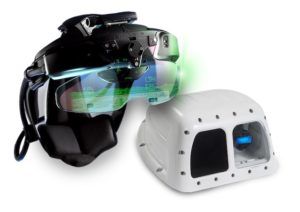 The program is also investigating the viability of vision technologies outside of the mainstream market.
The program is also investigating the viability of vision technologies outside of the mainstream market.
Johnson says, “On the helicopter side we have the added challenge of flying into phenomenon like maritime fog, where there are limitations to infrared systems. So, we’ve taken the forward-looking step of looking at other systems like millimeter wave radar and Lidar-based systems.”
VISUAL DATA MIX
Johnson anticipates that the final version of EFVS in helicopters will probably be “a blended approach” of combinations of EVS technologies that could vary according to the specific use.
“We’re trying to let it be performance-based, so we’re trying not to say you have to have infrared or Lidar. But rather we want people to select the best technologies for their particular use.”
When the study is complete Johnson’s findings will be passed to the FAA’s Office of Aviation Safety and its Office of Aircraft Certification, who will develop the operational rules and criteria for use and certification respectively. However, this final certification step is some way off, he says.
“We’re about in the middle of the study. On the fixed wing side it took ten years for certification. Hopefully it won’t take that long for us. We’ve made a lot of progress but we still have a way to go.”.


